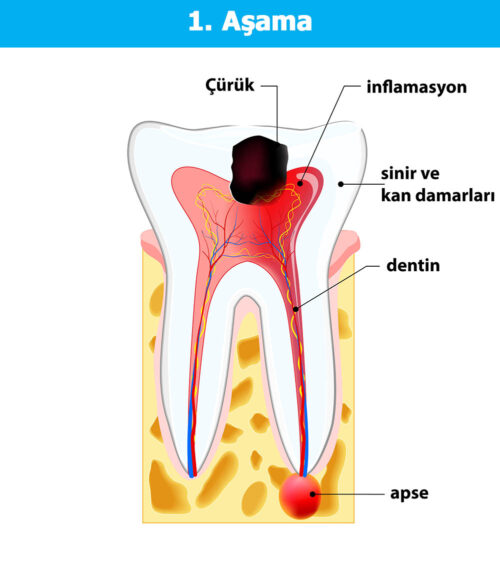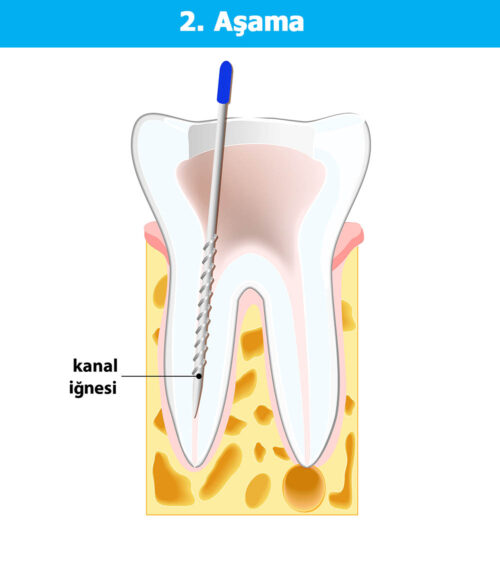The parts of the teeth that are visible in the mouth are called the crown, and the parts that are in the jawbone that are not visible to the eye are called the root. The root part is covered with cementum outside and dentine underneath. Under these hard tissues, there is a space containing vessels and nerves. This space is called pulp.
The pulp can be inflamed for various reasons (advanced decay, abrasion, trauma, etc.) or infected by the establishment of microorganisms. In this case, the pulp tissue is removed with special tools and devices, and the canal cavity is cleaned and shaped. In cases of advanced infection, one or several interim sessions may be required in order for the canal cavity and root tip to heal completely. When the canal cavity and root tip are made sure to heal completely, this space is filled with tissue-friendly canal filling materials.
What are the Symptoms?

Infection or the beginning of an inflammation can be considered in case of pain and sensitivity to cold and hot food/drinks and pain while eating.
In cases where the decay reaches the pulp and not treated, the infection reaches the jawbone from the root tip and may cause small or large swelling on the face.
It is believed that the tooth causing a swelling on the face should be extracted after the swelling is gone. However, even teeth that cause such infections can be kept in the mouth by root canal treatment and used for years.
How Long is the Life Span of Root Canal Treatment?
Nowadays, the success rate of root canal treatment has reached 90% with the latest technology tools used, tissue-friendly fillers and X-ray films that are helpful in diagnosis and treatment.
With a good oral care and regular dentist control, canal-treated teeth can be used for a long time.
Since the pulp that keeps the tooth alive is removed, the teeth may become fragile and more sensitive to fracture. In order to prolong the life of the treatment, it is necessary to avoid or be careful about chewing hard foods. After canal treatment of tooth, coating should be applied to minimize the risk of fracture.




